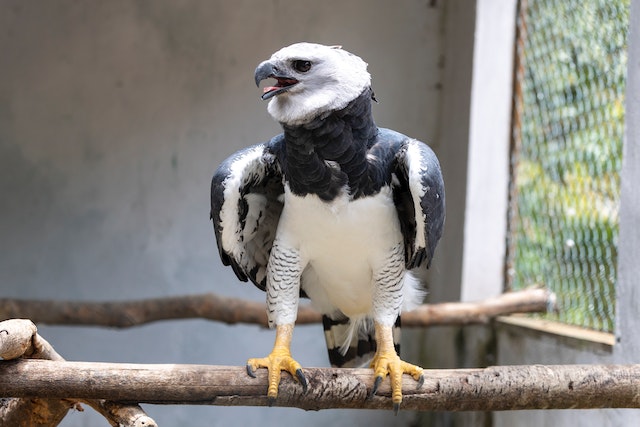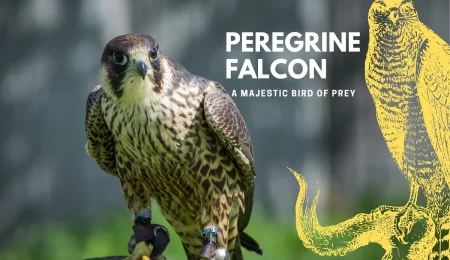The Harpy Eagle: Insane Biology
The Harpy Eagle: When it comes to birds of prey, the Harpy Eagle stands out. It’s a magnificent, powerful and imposing bird, known for its incredible hunting skills and impressive wingspan. In this article, we’ll explore the insane biology of the Harpy Eagle, from its physical characteristics to its habitat, diet, and behavior.
- What is a Harpy Eagle?
- Habitat and Distribution
- Diet and Hunting Skills
- Behavior and Life Cycle
- Threats and Conservation
- Interesting Facts
- Why is the Harpy Eagle Important?
- Harpy Eagle vs Other Eagles
- The Harpy Eagle in Pop Culture
- Harpy Eagle and Human Interaction
- The Future of the Harpy Eagle
The Insane Biology of: The Harpy Eagle

Photo by Fredson Silva
Birds of prey have always captivated our imagination with their fierce beauty and impressive hunting skills. The Harpy Eagle, in particular, is a creature that commands attention, with its massive size and powerful talons. Let’s dive into the fascinating world of the Harpy Eagle and explore its unique biology.
What is a Harpy Eagle?
The Harpy Eagle is a large bird of prey that can be found in Central and South America. It’s one of the largest eagles in the world, with a wingspan of up to 7 feet and a weight of up to 20 pounds. The bird has a distinctive appearance, with a thick, powerful beak and massive talons that are used for hunting.
The Harpy Eagle has a number of physical adaptations that make it an effective predator. Its eyesight is incredibly sharp, allowing it to spot prey from a great distance. It also has a powerful grip, thanks to its large talons, which can exert a pressure of up to 500 pounds per square inch. This allows the bird to catch and kill prey that is much larger than itself.
Habitat and Distribution
Harpy Eagle is found in the tropical rainforests of Central and South America, from Mexico to Brazil. It prefers to live in undisturbed, mature forests with high canopies, where it can hunt for its preferred prey.
Diet and Hunting Skills
Harpy Eagle is a carnivore, and its diet consists mainly of mammals, such as sloths, monkeys, and tree porcupines. It’s also been known to hunt birds and reptiles. The eagle is an apex predator, which means it has no natural predators in its ecosystem.
Harpy Eagle is a skilled hunter, using its keen eyesight and powerful talons to capture prey. It will often perch high in the canopy and wait for its prey to pass by. When it spots a potential target, it will swoop down and use its talons to grab it. The eagle’s grip is so strong that it can easily crush the bones of its prey.
Behavior and Life Cycle
Harpy Eagle is a solitary bird, except during the breeding season. It mates for life, and the pair will build a large nest high up in a tree. The female will lay one or two eggs, which both parents will incubate. The young eaglets will stay in the nest for several months, being fed by both parents until they are ready to leave the nest.
Harpy Eagle is a vocal bird, and it uses a variety of calls to communicate with other eagles. It’s also been known to engage in territorial displays, such as aerial acrobatics and loud calls, to defend its territory.
Threats and Conservation
Harpy Eagle is currently classified as Near Threatened by the IUCN, due to habitat loss and hunting. The bird is prized for its feathers and is also hunted for food. Conservation efforts are underway to protect the species, including habitat conservation and captive breeding programs.
Interesting Facts
- Harpy Eagle is named after the Greek mythological creature, the harpy, which had the body of a bird and the face of a woman.
- The eagle’s talons can be as long as a grizzly bear’s claws.
- Harpy Eagle is one of the largest and most powerful birds of prey in the world.
- Harpy Eagle is an apex predator and has no natural predators in its ecosystem.
- The eagle’s call is often described as sounding like a monkey’s scream.
Why is the Harpy Eagle Important?
Harpy Eagle plays an important role in its ecosystem as an apex predator. It helps to control populations of other animals and maintain the balance of the ecosystem. The bird also has cultural significance for many indigenous communities in Central and South America.
Harpy Eagle vs Other Eagles
Compared to other eagle species, the Harpy Eagle is larger and more powerful. It’s also more specialized in its diet, feeding mainly on mammals. Other eagle species, such as the Bald Eagle, have a more diverse diet.
The Harpy Eagle in Pop Culture
The Harpy Eagle has made appearances in a variety of movies, books, and other media. It’s often portrayed as a powerful and imposing creature, befitting its reputation as one of the largest and most impressive birds of prey in the world.
Harpy Eagle and Human Interaction
The Harpy Eagle has had a complex relationship with humans throughout history. It has been hunted for food and its feathers, and its habitat has been destroyed due to deforestation. However, there are also efforts to protect the species, such as captive breeding programs and habitat conservation.
The Future of the Harpy Eagle
The future of the Harpy Eagle is uncertain, as it continues to face threats from habitat loss and hunting. However, conservation efforts are underway, and there are reasons to be optimistic about the species’ future.
Conclusion
The Harpy Eagle is a remarkable bird, with a unique set of adaptations and behaviors that make it one of the most impressive creatures in the world. It’s important that we take steps to protect this species and ensure that it continues to thrive in its natural habitat. By supporting conservation efforts and raising awareness about the importance of protecting the Harpy Eagle, we can help to ensure that this amazing bird remains a symbol of the beauty and diversity of our planet’s wildlife for generations to come.
FAQs
- Is the Harpy Eagle endangered?
- The Harpy Eagle is currently classified as Near Threatened by the IUCN, due to habitat loss and hunting.
- What is the Harpy Eagle’s diet?
- The Harpy Eagle’s diet consists mainly of mammals, such as sloths, monkeys, and tree porcupines. It’s also been known to hunt birds and reptiles.
- How big is the Harpy Eagle?
- The Harpy Eagle is one of the largest and most powerful birds of prey in the world, with a wingspan of up to 7 feet and a weight of up to 20 pounds.
- Where can I see a Harpy Eagle in the wild?
- The Harpy Eagle is found in Central and South America, primarily in tropical rainforests. It can be difficult to spot in the wild, but some eco-tourism companies offer guided tours to see the bird in its natural habitat.
- How can I help protect the Harpy Eagle?
- You can help protect the Harpy Eagle by supporting conservation efforts and raising awareness about the importance of protecting endangered species. This can include donating to conservation organizations, reducing your carbon footprint, and advocating for policies that protect wildlife and their habitats.
Image by Peter Woelfel from Pixabay




Leave a Comment